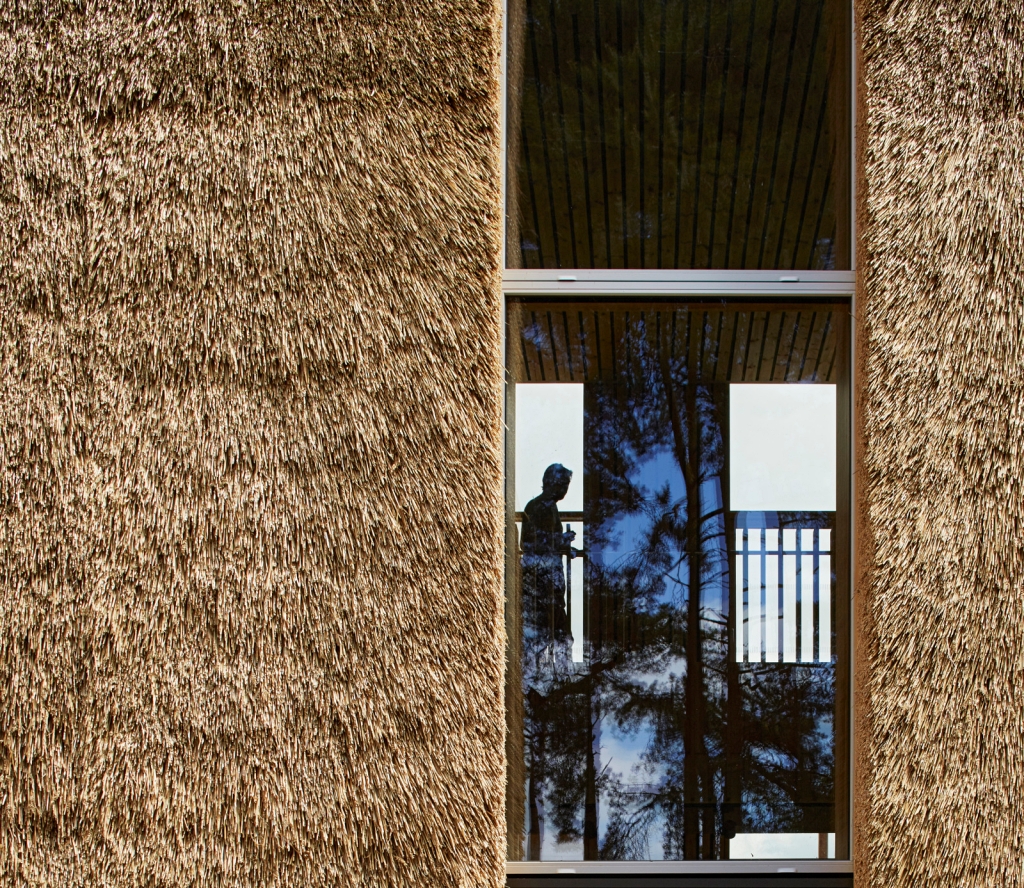Build Better Now at COP26: the Urgent Role of Buildings and Cities

The Enterprise Centre, UK. Image by Dennis Gilbert
The built environment has a central role to play in supporting the world’s transition to a net zero carbon economy and tackling climate change. To highlight this, the United Nations Climate Conference COP26 will feature a dedicated Built Environment Day as part of its presidency programme. The virtual exhibition Build Better Now, which will be hosted online and free to access from 31 October–12 November 2021, has been curated to give the sector a strong voice within this internationally significant event.
The virtual pavilion has been designed and developed by the Visualisation and VR team at AECOM in collaboration with exhibition designers Install Archive. Alongside the exhibition, Build Better Now will host an events series comprising a programme of tours and talks, keynotes, panel discussions and other downloadable content, to educate and inspire the built environment industry and the public to identify and deliver climate solutions at scale, acting as soon as they can.

The Fountain of Circular Recovery by Make Architects 
Image by AECOM
Following the open call in June 2021, a judging panel comprising industry leaders from across the world selected projects that are making an immediate positive impact on the planet and people’s lives. These projects are both scalable and replicable, giving the potential to deliver far-reaching impacts. Exploring themes such as natural resource use, climate mitigation and adaptation and nature and biodiversity, Build Better Now will showcase some of the most innovative solutions from across the globe.
A sustainability focused 360-degree installation, designed by Make Architects, will act as a centrepiece within the exhibition. Titled ‘The Fountain of Circular Recovery’, it highlights opportunities for recovery, reuse and recycling in the built environment to establish a truly circular economy.
Pioneering projects include a cultural centre in Sweden that will be one of the world’s tallest timber buildings; the largest Passivhaus certified building in the Southern hemisphere in Australia; a 100-hectare innovation district in Italy digitally mapped and powered by 100% renewable energy sources; and the largest new build energy-positive office building in Norway, which supplies surplus renewable energy to neighbouring buildings as well as powering electric buses.

Powerhouse, Norway. Image by Ivar Kvaal 
TECLA, Italy. Image by Iago Corazza
Buildings constructed using natural local materials range from a UK university building utilising thatch and reed; a school in Indonesia built with bamboo and the first 3D-printed sustainable homes made entirely from raw clay—balancing contemporary construction techniques with historic, traditional materials.
Projects protecting and enhancing nature include a government-led eco-tourism initiative to restore a national park in Rwanda and a high-tech rewilding project in the Scottish Highlands, restoring native forest and peatlands and reintroducing locally extinct species to 100 acres of land, which will form a template for similar nature regeneration globally.

Natural Capital Library, Scotland. Image by Chris Coupland, AECOM 
Singita Kwitonda Lodge, Rwanda. Image by Adriaan Louw
As well as government-funded research into retrofitting Scotland’s iconic but hard-to-heat tenement homes, the exhibition features a favela in Brazil and affordable sustainable housing solutions in the UK, New Zealand and Pakistan. Also included are an adaptable cross laminated timber bridge concept designed for a circular economy, as well as an initiative to develop a sustainable mass timber building market building in East Africa.
